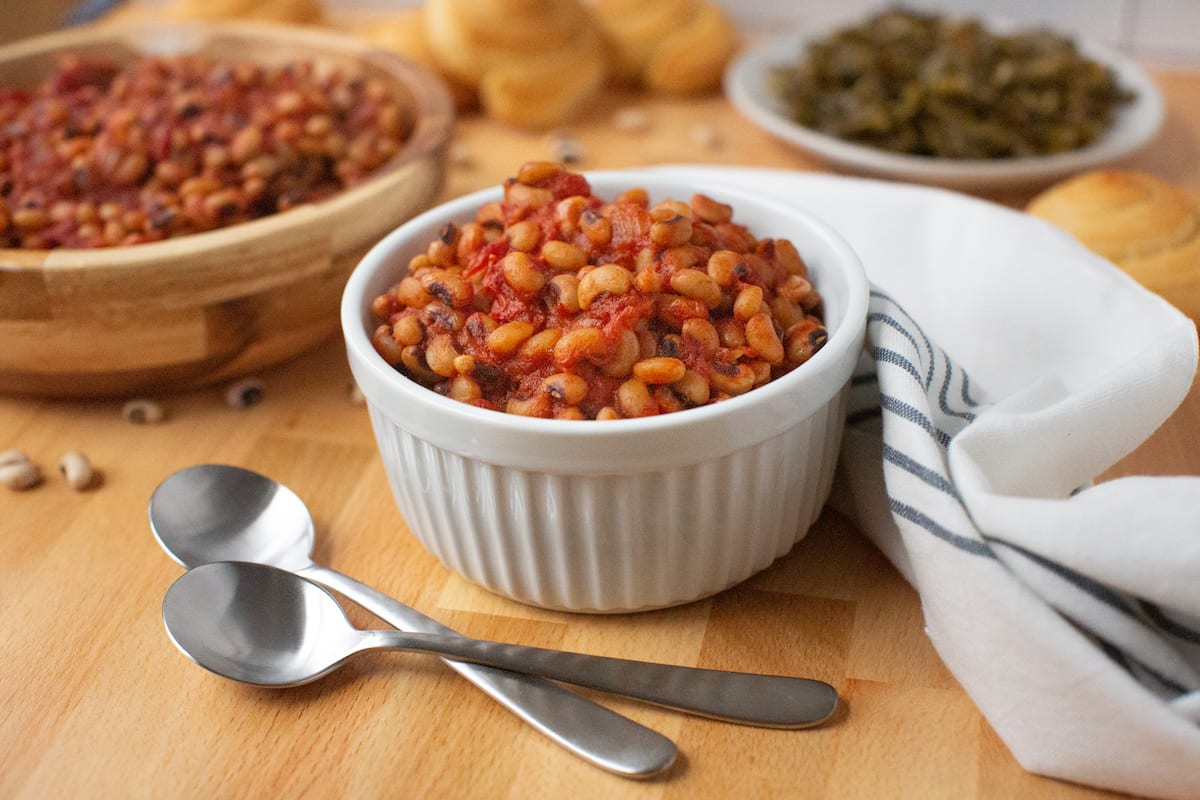
Vegan Black-Eyed Peas
by Meghan Rodgers
December 30, 2020
All over the world, people put their own spin on New Year’s foods, but the one thing they all have in common is a wish for the best of luck in the new year.
There are countless culinary New Year’s Eve and New Year’s Day traditions people follow to help start their year off on the right foot. Even those without such superstitious beliefs often join in the fun on the first of the year — and after a year like 2020, who wants to pass at any opportunity for a little bit of luck?
In Spain, the story goes you should eat 12 grapes at midnight — one with each stroke of the clock. In the Netherlands, it’s oliebollen, or small fried dough balls stuffed with raisins, sprinkled with powdered sugar, that ring in the new year. In many Asian countries, it’s customary to eat long noodles, which have come to signify longevity. Pomegranates represent good luck in Turkey. Lentils look like little green coins and symbolize growing wealth to Italians. In many countries, it’s pork that’s on the menu. Cubans, Hungarians, Portuguese and Austrians all say pigs stand for progress because these animals never move backward.
In the United States, favorite New Year’s dishes vary by region. In Pittsburgh, it’s all about pork and sauerkraut — a relic of our strong German ancestry. Pork is often replaced with kielbasa or sausage, and pierogies are often tossed in the pot as a tasty filler.
For vegans or vegetarians, however, New Year’s Day in Pittsburgh can pose a problem. Unless you’re okay with kraut and pierogies cooked in the same pot as pork, it’s likely this tradition falls flat for you.
That’s why I’ve gravitated toward the Southern states’ tradition of black-eyed peas, collards and cornbread.
Southerners know that black-eyed peas are the secret to a prosperous New Year thanks to their penny-like appearance — so the legend goes. Traditionalists cook them with ham hock, but vegans and vegetarians can leave out the meat and still enjoy this sustainable yet satisfying Vegan Black-Eyed Peas recipe.

Plus, by eating vegan, you bestow lots of luck on every animal.
Whip up this recipe on New Year’s Day for a healthy start to 2021. While Southern cooking isn’t known for its nutrition, black-eyed peas are a rare bright spot. One cup has just 200 calories and 1 gram of fat while providing 13 grams of protein and 11 grams of fiber.
Which will only help with that other New Year’s custom we all have in common — swearing to lose weight.
Vegan Black-Eyed Peas
Ingredients
2 tbsp olive oil
2 cups onion, diced
30 ounces vegetable broth
4 cups black-eyed peas (dry)
2 cups water (plus more, as needed)
28 ounces canned whole tomatoes
3 tbsp tomato paste
3 tbsp brown sugar (or another vegan sugar substitute)
1/2 tbsp salt, plus more to taste
1 tsp pepper, plus more to taste
Directions
In a large pot add olive oil and warm over high heat.
Add onions and cook until tender and translucent — about 4-5 minutes. Stir often.
Add broth, peas, water, tomatoes, paste, and brown sugar. Bring pot to a boil.
Turn down heat and cover with lid. Let simmer on low for about 2 hours, or until black-eyed peas are tender. Check on pot often, and add more water (or broth) as needed.
Season with salt and pepper.
Serve with a side of vegan collards and vegan cornbread for a truly animal-friendly southern snack.

Leave A Comment